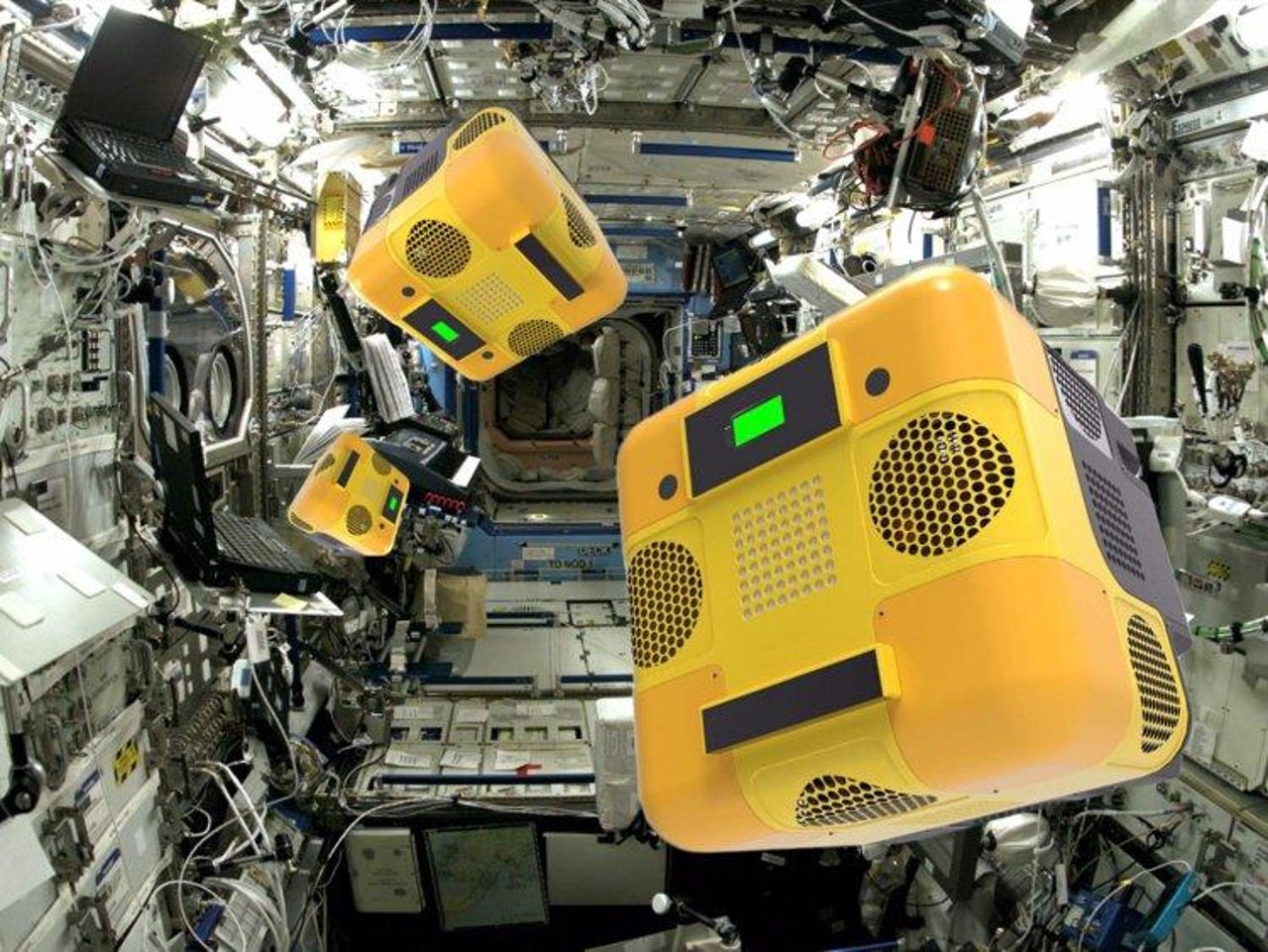Robot bees to help astronauts on space station


Featured
Robot bees in space. Sounds like a throwaway premise to a B sci-fi flick, but it'll soon be a reality as NASA prepares to send three Astrobee cube robots into space to join crew on the International Space Station (ISS).
The Astrobees were developed at NASA's Ames Research Center in Silicon Valley. The ruggedized robotic cubes will float around the International Space Station and perform routine tasks, such as system inspections, basic housekeeping, and serving as on-call camera-bot.
Like terrestrial robots, Astrobee will use specialized equipment to interact with the environment around it. They use six fans along each of the surfaces to move in three dimensions while floating in the low-gravity (but oxygen rich) ISS environment. The robot has a laser pointer and touch and sound interfaces. Astrobee also has a specialized grasping claw with interlocking digits to grasp and manipulate the environment.
Last year, after drawing up plans for its own lightweight articulated arm that folds into a compartment inside the robot's body, NASA ran a crowdsourcing contest to solicit outside designs for the arm. Three winners were announced last summer.
The robots will be assisting crew with maintenance and inventory tracking aboard the ISS. Like everything involving the space station, the deployment of the robots is itself a test, a way to study human-robot interaction in space.
"Learning how robots can best work with humans in close proximity will be key for exploring the Moon and other destinations," according to a NASA post on the deployment.
Since 2006, NASA has been using three floating robot orbs called SPHERES aboard the ISS. Among other missions, the SPHERES robots have helped astronauts test the complicated dynamics of recovering space debris by tethering to it.
Using both kevlar and nylon monofilament, astronauts tested several maneuvers to measure the dynamic response of the tether during stress and to assess how the satellites perform while being tugged from different angles.
Two of the three Astrobee robots are scheduled to launch this month from Wallops Flight Facility in Virginia. You can track the launch here.